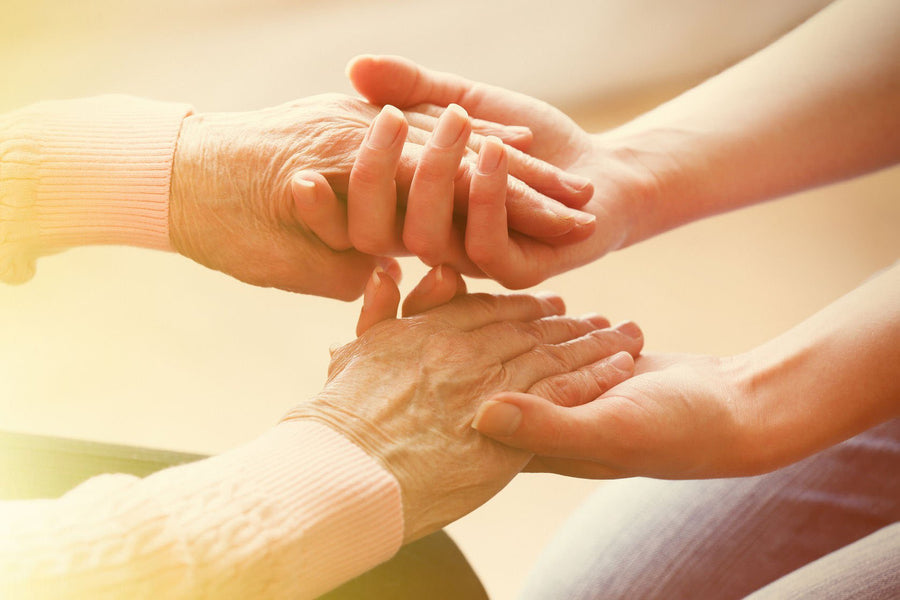
I was making breakfast in my kitchen this morning when I heard the stirrings of my three-year-old son waking up. My husband walked into his bedroom and gathered him up into his arms for a good morning cuddle. As my son slowly made the transition from the Land of Nod and into the day ahead, the two of them sat together for at least 10 minutes, still in their embrace, watching me as I pottered around in the kitchen. It wasn’t an unusual occurrence in our home, but it was a heartwarming moment between father and son, and I couldn’t help but soak in some of the warmth and love myself. It got me thinking about the research I’ve been doing lately into the power of interpersonal touch and how moments like these can have a profound effect on our biochemistry in a way that can be beneficial for our health.
In recent years researchers have been increasingly documenting the positive physiological and biochemical effects of touch, including decreases in blood pressure and heart rate, decreases in the stress hormone cortisol, increases in the love hormone oxytocin, stimulation of reward regions in the brain, and reduced activation in stress-related regions.
One study on rabbits that were fed high cholesterol diets found that if they were petted, held, talked to, and played with on a regular basis, they had 60 percent less blockage in their arteries than the rabbits that were left in isolation. In other words, positive physical contact was correlated with the animals being better able to eliminate excess cholesterol. In human studies, researchers have found that a 20-second hug along with 10 minutes of hand holding reduced the harmful physical effects of stress, including its effect on blood pressure and heart rate. Another recent study found that hugging can reduce our susceptibility to catching a cold during times of stress.
It’s interesting that moderate-pressure massage is being shown to be one of the most effective forms of touch. It has been used primarily to treat pain, although it is increasingly used for other problems including job stress, depression, autoimmune conditions like asthma, dermatitis and rheumatoid arthritis, as well as fibromyalgia, diabetes, and cancer.
Much of this research confirms what many of us already know to be true. Whether it’s an enthusiastic handshake, an encouraging pat on the back, a welcoming embrace, a sensual caress, a nudge for attention, or a tender kiss, physical contact can at times convey meaning more powerfully than language. Even the briefest of touches from another person can elicit a strong emotional response. There is nothing like the comforting experience of being touched by our loved ones.
Yet despite its importance for communication, health, and relationships, human touch is becoming increasingly taboo in many cultures. We’re actively encouraged to keep our hands to ourselves in fear of being accused of invading personal space, of being misinterpreted, of being sued, or of being accused of child abuse. One of the world’s leading touch researchers, Tiffany Field, the head of the Touch Research Institute at the University of Miami’s Miller School of Medicine, who has spent 30 years studying the effects of interpersonal touch, believes that many of us are dangerously touch-deprived and are suffering from “touch hunger.” This may explain why “professional cuddler” Samantha Hess, who opened up a cuddle shop in Portland Oregan to provide non-sexual touch to those who otherwise might go without, was reported to have 10,000 customer enquiries in the first week she opened. It may also explain the social media phenomena of the Free Hugs Campaign – a video of a guy giving out free hugs that went viral and has now been seen by more than 77 million people.
Previously I’ve written about the compelling body of evidence demonstrating the link between feeling socially connected and good health, and the link between feeling socially isolated and having bad health. Considering that being part of a warm, loving community makes us far more likely to have regular physical contact with others, and that being socially isolated would likely mean the opposite, researchers may well be on the path to uncovering one of the underlying mechanisms to explain the links.
With my own history of having a chronic illness, and having delved into all this research on touch, I confess to being on the look out for more opportunities to get touchy feely. Having a very cuddly toddler in my home is definitely a bonus. If you’re after some appropriate and safe ways to boost your own daily physical contact, here are some of the ideas I’ve come up with:
- Cuddle on the couch with your loved ones when you’re watching TV.
- Pet an animal - dog, cat, horse, llama…whatever.
- Hold hands when you’re walking with your kids and other loved ones.
- Give your family members a good morning hug when you wake up, when you see them off for the day and/or when you reunite after the day is done. If you don’t live in the same house, you could always send them a virtual hug via a text message or email to let them know you’re thinking of them.
- High five your colleagues when something good happens at work. In fact, handshakes, fist bumps, and even back pats can all be part of a healthy workplace.
- Book yourself in for a massage with a registered therapist.





 The Connection (DOWNLOAD-TO-OWN)
The Connection (DOWNLOAD-TO-OWN) My Year Of Living Mindfully - Book
My Year Of Living Mindfully - Book




